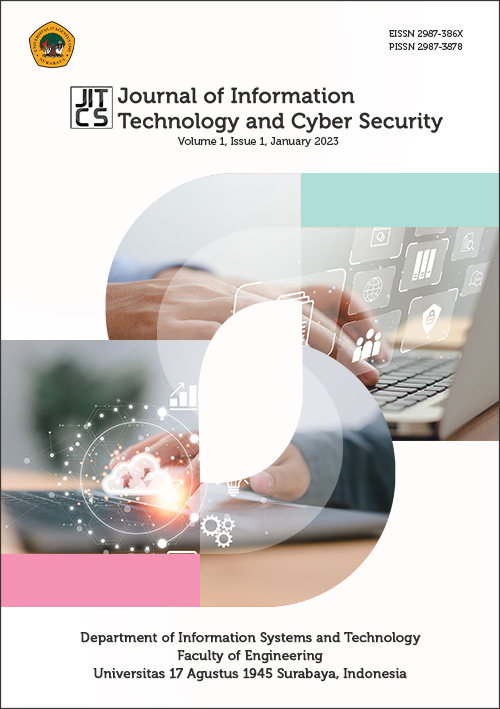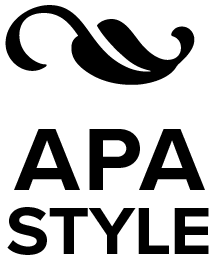A Child Growth and Development Evaluation Using Weighted Product Method
Abstract
Child development is one of the factors that must be considered in improving a country's education. The level of maturity of human resources is able to maximize starting from childhood. The guidebook of the Ministry of Education and Culture of the Republic of Indonesia (Kemendikbud RI) in 2018 contained six indicators to assess children's learning ability, namely: 1) Moral, 2) Social, 3) Language, 4) Cognitive, 5) Motor, and 6) Art. This study implements these indicators to evaluate children's growth and development. The evaluation method uses the Weighted Product Method (WPM). WPM provides a ranking of the result of the evaluation. In addition, WPM also has an assessment of Beneficial and non-beneficial as a more relevant assessment between indicators. Data were collected by questionnaire at kindergarten schools with the respondents' age average of 5-6 years. The results will be calculated with indicators criteria weights given. The test results recommended for students between 0.65 to 0.62 are as follows: Mahmud, Diko, Cindy, Denny, and Riko. The kindergarten manager can use these recommendations to increase the student's aptitude.
Downloads
References
Afriadi, B. (2022). Multiple Criteria Decision Making (MCDM) for Quality Education Management in Higher Education: Systematic Review. International Journal of Business, Law, and Education, 3(2), 173–180.
Ahsan, M., & Indawati, N. (2019). Implementation weighted product method to determine multiple intelligence child. Journal of Physics: Conference Series, 1375. https://doi.org/10.1088/1742-6596/1375/1/012038
Aminudin, N., Sundari, E., Shankar, K., Deepalakshmi, P., Fauzi, F., Irviani, R., & Maseleno, A. (2018). Weighted Product and its application to measure employee performance. International Journal of Engineering & Technology, 7(2.26), 102–108. https://doi.org/10.14419/ijet.v7i2.26.14362
El Hadidi, O., El-Dash, K., Besiouny, M., & Meshref, A. (2022). Evaluation of Building Life Cycle Cost (LCC) Criteria in Egypt using the Analytic Hierarchy Process (AHP). International Journal of the Analytic Hierarchy Process, 14(2). https://doi.org/10.13033/ijahp.v14i2.958
Fitriasari, N. S., Fitriani, S. A., & Sukamto, R. A. (2017). Comparison of weighted product method and technique for order preference by similarity to ideal solution method: Complexity and accuracy. 2017 3rd International Conference on Science in Information Technology (ICSITech), 453–458. https://doi.org/10.1109/ICSITech.2017.8257155
Honggowibowo, A. S., & Ayuningtyas, A. (2022). Penentuan Reward Guru Les Menggunakan Metode Profile Matching. Jurnal Informatika Universitas Pamulang, 7(2), 348–357. http://openjournal.unpam.ac.id/index.php/informatika/article/view/15192
Ihdalhusnayain, L., Al Ikhsan, S. H., & Kusumah, F. S. F. (2022). Sistem Pendukung Keputusan Penentuan Prioritas Perda dengan Metode Simple Additive Weighting ( SAW ) Berbasis Web. Jurnal Informatika Universitas Pamulang, 7(2), 327–334.
Ikrimach, I., & Retnowo, M. (2022). Implementation of Multi-Criteria Decision Making ( MCDM ) for new student majors recommendations. International Journal of Engineering, Technology and Natural Sciences (IJETS), 4(1), 52–58.
Kao, F. C., Dinh, T. N., & Nguyen, A. T. T. (2022). Evaluation Model and Decision Analysis of Digital Firms Ranked in Forbes’ Top Companies. Discrete Dynamics in Nature and Society, 2022. https://doi.org/10.1155/2022/2722914
Kemendikbud. (2020). Modul 2: Perkembangan Anak Usia Dini.
Khairina, D. M., Asrian, M. R., & Hatta, H. R. (2016). Decision Support System for New Employee Recruitment Using Weighted Product Method. 2016 3rd International Conference on Information Technology, Computer, and Electrical Engineering (ICITACEE), 297–301.
Kurniawan, D. E., & Amanda, S. T. (2017). Pemilihan Rumah Menggunakan Metode Weight Product dengan Visualisasi Lokasi Objek. KLIK (Kumpulan JurnaL Ilmu Komputer), 4(1), 102–111. http://klik.ulm.ac.id/index.php/klik/article/view/77
Lubis, N. (2020). Faktor-Faktor yang Berhubungan dengan Tumbuh Kembang Anak Usia 1-3 Tahun di Desa Kayu Laut Kecamatan Panyabungan Selatan Kabupaten Mandailing Natal Tahun 2020. Jurnal Kesehatan Ilmiah Indonesia (Indonesian Health Scientific Journal), 5(2), 19–26. https://doi.org/10.51933/health.v5i2.271
Moradi, N. (2022). Performance Evaluation of University Faculty by Combining BSC, AHP and TOPSIS: From the Students’ Perspective. International Journal of the Analytic Hierarchy Process, 14(2), 1–29. https://doi.org/10.13033/ijahp.v14i2.915
Muin, A. A. (2022). Sistem Pendukung Keputusan Pemilihan Kuliner Terpopuler di Kalimantan Selatan dengan Metode TOPSIS. Jurnal Informatika Universitas Pamulang, 7(2), 236–240.
Puspitasari, N., Haviluddin, H., Hamdani, H., Septiarini, A., Widians, J. A., & Irgadanti, F. P. (2022). Determination of Land Suitability for Herbal Plants Using FMADM With Weighted Product. 2022 5th International Conference on Information and Communications Technology (ICOIACT), 93–98. https://doi.org/10.1109/ICOIACT55506.2022.9972003
Rosiska, E., & Harman, R. (2019). Metode Analitical Hierarchy Process (AHP) Dalam Pemilihan Umum Presiden Indonesia 2019. InfoTekJar : Jurnal Nasional Informatika Dan Teknologi Jaringan, 3(2), 297–306. https://doi.org/10.30743/infotekjar.v3i2.1067
Safriyanti, S., & Ibrahim, I. (2022). Pengaruh Kreativitas Guru Terhadap Kemampuan Kognitif Anak Usia 5-6 Tahun di RA Azzahra Lampung Timur. Jurnal Pendidikan Anak, 11(1), 1–9. https://journal.uny.ac.id/index.php/jpa/article/view/46415/17632
Sahroni, T. R., & Ariff, H. (2017). Design of analytical hierarchy process (AHP) for teaching and learning. Proceedings - 11th 2016 International Conference on Knowledge, Information and Creativity Support Systems, KICSS 2016. https://doi.org/10.1109/KICSS.2016.7951412
Stanujkic, D., Popovic, G., Karabasevic, D., Meidute-Kavaliauskiene, I., & Ulutaş, A. (2023). An Integrated Simple Weighted Sum Product Method—WISP. IEEE Transactions on Engineering Management, 70(5), 1933–1944. https://doi.org/10.1109/TEM.2021.3075783
Sugiarto, A., Rizky, R., Susilawati, S., Yunita, A. M., & Hakim, Z. (2020). Metode Weighted Product pada Sistem Pendukung Keputusan Pemberian Bonus Pegawai pada CV Bejo Perkasa. Bianglala Informatika : Jurnal Komputer Dan Informatika Akademi Bina Sarana Informatika Yogyakarta, 8(2), 100–104.
Verma, S., & Patel, K. (2019). Weighted product Taxonomy for Mobile-Commerce site in Recommendation of Product based on Heuristic Approach. 2019 International Conference on Intelligent Computing and Control Systems (ICCS), 1435–1440. https://doi.org/10.1109/ICCS45141.2019.9065437
Wahyuningsih, D. (2020). Model Pembelajaran BCCT bagi Anak Usia Dini Sesuai dengan Tahap Perkembangan. Dunia Anak: Jurnal Pendidikan Anak Usia Dini, 3(1), 58–69.
Wang, S., Li, D., Zhang, X., & Zhang, S. (2021). Weighted Cross-Product Constraint Transformation to Optimize Spatial Structure of Data. 2021 4th International Conference on Artificial Intelligence and Big Data (ICAIBD), 27–31. https://doi.org/10.1109/ICAIBD51990.2021.9459085
Yoni, D. C., & Mustafidah, H. (2016). Penerapan Metode WP (Weighted Product) untuk Pemilihan Mahasiswa Lulusan Terbaik di Fakultas Teknik Universitas Muhammadiyah Purwokerto. JUITA: Jurnal Informatika, 4(1), 22–27.
Copyright (c) 2023 The Author(s)

This work is licensed under a Creative Commons Attribution-NonCommercial-ShareAlike 4.0 International License.
Copyright Notice based on COPE (Committee on Publication Ethics) for JITCS: Journal of Information Technology and Cyber Security
-
Ownership and Copyright:
- JITCS: Journal of Information Technology and Cyber Security respects the intellectual property rights of authors. The copyright for individual articles published in JITCS is retained by the respective authors, unless otherwise specified.
- The articles published in JITCS are licensed under a Creative Commons Attribution-NonCommercial-NoDerivatives 4.0 International License (CC BY-NC-ND 4.0), which permits use and distribution in any medium, provided the original work is properly cited, the use is non-commercial, and no modifications or adaptations are made.
- JITCS serves as the initial publisher of the articles, providing them with the first publication platform.
-
Permissions and Usage:
- Distribution for Non-Commercial Purposes: Permitted: Users are allowed to distribute the article for non-commercial purposes, provided the original work is properly cited and no modifications or adaptations are made.
- Distribution for Commercial Purposes: Not Permitted: The article may not be distributed for any commercial purposes without obtaining prior written permission from the author(s).
- Inclusion in a Collective Work (e.g., Anthology) for Non-Commercial Purposes: Permitted: Users are allowed to include the article in a collective work, such as an anthology, as long as the use is non-commercial and the work remains unchanged.
- Inclusion in a Collective Work for Commercial Purposes: Not Permitted: The article may not be included in any collective work or anthology intended for commercial purposes without prior permission from the author(s).
- Creation and Distribution of Revised Versions, Adaptations, or Derivative Works (e.g., Translation) for Non-Commercial Purposes: Not Permitted: Users may not create or distribute revised versions, adaptations, or derivative works, including translations, for non-commercial purposes.
- Creation and Distribution of Revised Versions, Adaptations, or Derivative Works for Commercial Purposes: Not Permitted: Users may not create or distribute revised versions, adaptations, or derivative works, including translations, for commercial purposes.
- Text or Data Mining for Non-Commercial Purposes: Permitted: Users are permitted to engage in text or data mining of the article for non-commercial research purposes, provided the original work is properly attributed.
- Text or Data Mining for Commercial Purposes: Not Permitted: Users may not engage in text or data mining of the article for commercial purposes without obtaining explicit permission from the author(s).
-
Attribution and Citation:
- Proper attribution and citation of the published work should be provided when using or referring to content from JITCS. This includes clearly indicating the authors, the title of the article, the journal name (JITCS), the volume/issue number, the publication year, and the article's DOI (Digital Object Identifier) when available.
- When adapting or modifying the published content, proper attribution to the original source should be given, and the adapted or modified content should be shared under the same CC BY-NC-ND 4.0 license.
-
Plagiarism and Copyright Infringement:
- JITCS considers plagiarism and copyright infringement as serious ethical violations. Authors are responsible for ensuring that their submitted work is original and does not infringe upon the copyright or intellectual property rights of others.
- Any allegations of plagiarism or copyright infringement will be investigated promptly and thoroughly. If proven, appropriate actions, including rejection of the manuscript, retraction of the published article, or other corrective measures, will be taken.
-
Open Access Licensing:
- JITCS supports open access publishing and encourages authors to consider publishing their work under the CC BY-NC-ND 4.0 license to promote the dissemination and use of knowledge in the field of information technology and cyber security.
- The specific terms and conditions of the CC BY-NC-ND 4.0 license will be clearly indicated on the published articles.
-
Policy Review: This Copyright Notice will be periodically reviewed and updated to ensure its continued relevance and compliance with copyright laws, ethical standards, and open access principles in scholarly publishing. Any updates or revisions to the notice will be communicated to the relevant stakeholders.
By adhering to this Copyright Notice, JITCS aims to protect the rights of authors, promote proper attribution and citation practices, and facilitate the responsible and legal use of the published content in accordance with the CC BY-NC-ND 4.0 license.




